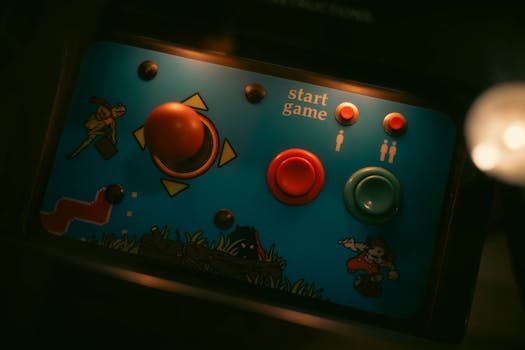How to Create Immersive Game Environments: A Step by Step Guide to Game Environment Design for Indie Developers
Creating immersive game environments is key for indie game developers who want to keep players engaged. In this guide, you learn what immersive environments are, how to design them, and why they are important for your game’s success. We focus on practical steps for creating immersive game environments, helping you improve your skills and grow your audience. Let’s start building worlds that players love to explore.
Understanding Immersive Game Environments
Creating immersive game environments is essential for grabbing players’ attention. An immersive environment pulls players into the game world, making them feel like they are part of the story. This matters because players today expect more than just gameplay; they want to experience a fully realized world.
What Makes a Game Environment Immersive?
An immersive game environment has several key elements:
Visual Realism: This includes high-quality graphics, realistic textures, and appropriate colors. The more the environment looks and feels real, the easier it is for players to get lost in it.
Interactive Elements: Players should be able to interact with the environment. This could mean opening doors, moving objects, or even changing the weather. Interactive elements make the world feel alive.
Storytelling: The environment should tell a story on its own. This can be done through visual clues, like graffiti on walls, or through sound effects, like distant thunder. Each element contributes to a bigger narrative.
Examples of Immersive Design
Consider games like The Legend of Zelda: Breath of the Wild. The expansive landscapes, changing weather, and interactive world draw players in. Similarly, The Last of Us uses a post-apocalyptic environment filled with details that tell a story of survival and loss. Both games show how effective environment design can enhance player engagement.

A Step by Step Guide to Game Environment Design
Designing a game environment takes careful planning and execution. Here’s a step-by-step guide to help indie developers through the process.
Step 1: Conceptualization
Start with a clear idea of what you want your environment to look like. Consider:
- What is the setting? (e.g., futuristic city, enchanted forest)
- What emotions do you want to evoke? (e.g., wonder, fear)
- What story are you trying to tell?
Step 2: Planning
Once you have a concept, create a plan. This should include:
Sketches: Draw rough sketches to visualize your ideas. They don’t need to be perfect—just enough to get the point across.
Mood Boards: Gather images, colors, and textures that inspire you. This will help keep your design consistent.
Step 3: Design
Now it’s time to dive into the actual design process. Here’s what to do:
3D Modeling: Use software like Blender or Unity to create 3D models of your environment. Start by blocking out the main shapes.
Textures and Materials: Apply textures to your models. Use high-quality images to ensure realism.
Lighting: Proper lighting sets the mood. Experiment with different light sources to see how they affect the environment.
Step 4: Iterative Testing
Testing is crucial. Here’s how to approach it:
Playtesting: Invite players to explore your environment. Watch how they interact with it. Gather feedback on what works and what doesn’t.
Refinement: Use feedback to make improvements. This may involve tweaking textures, adjusting lighting, or even redesigning elements.
Visual Aids
Include sketches and wireframes in your planning phase. They help visualize your concepts and can serve as a guide during design. For more insights on this process, check out game world building techniques.

Now that you have a basic understanding of the design process, here are some practical tips for creating immersive game environments.
Realism in 3D Environments
Focus on these elements to create realistic environments:
Lighting: Use dynamic lighting to enhance realism. For example, simulate sunlight filtering through trees in a forest.
Textures: High-resolution textures can make a big difference. Use detailed images for surfaces like wood, stone, or metal.
Spatial Design: Think about how players will move through your environment. Design pathways and obstacles that feel natural and encourage exploration.
Narrative Integration
To create immersive narratives in your games, consider the following:
Environmental Storytelling: Use the environment itself to tell stories. For example, a decaying building can suggest a past conflict.
Sound Design: Incorporate ambient sounds that fit your environment. This could be birds chirping in a forest or mechanical whirring in a sci-fi setting.
Checklists and Best Practices
Here are some actionable tips to keep in mind:
Asset Management: Organize your assets clearly. Use folders and naming conventions to keep track of everything.
Performance Optimization: Optimize your game for performance. This includes reducing polygon counts and using level of detail (LOD) techniques.
Community Feedback: Engage with your community. Share your designs and ask for feedback. This can provide valuable insights from potential players.

Real World Examples and Case Studies
Looking at successful indie developers can provide valuable lessons. Here are a few examples:
Case Study 1: Stardew Valley
Stardew Valley is a farming simulation game that creates a rich environment for players. The developer, ConcernedApe, used pixel art to create a charming world. The game encourages exploration, with hidden treasures and surprises around every corner. This design choice significantly enhanced player engagement and led to positive reviews.
Case Study 2: Celeste
Celeste features a mountain climbing theme. The environment is not just a backdrop; it shapes the gameplay. The design uses colors and music to evoke emotions, guiding players through challenges. The game’s success shows how effective environment design can lead to enhanced player experience and connection.
When you weave together immersive storylines with engaging environments, players feel more connected to the game. This connection can lead to lasting loyalty.
By following these guidelines, indie developers can create immersive game environments that captivate players and encourage exploration. Remember, the journey of game development is as important as the final product. Keep experimenting and refining your skills!
FAQs
Q: How can I integrate storytelling elements into my game environment without it feeling forced?
A: To integrate storytelling elements into your game environment without feeling forced, focus on showing rather than telling by embedding narrative elements within gameplay and level design. Use environmental storytelling, such as visual cues and interactive objects, to reveal the story organically as players progress, ensuring that each element serves a purpose in enhancing the gameplay experience.
Q: What actionable steps can I follow for designing realistic 3D worlds while keeping the development process manageable?
A: To design realistic 3D worlds while keeping the development process manageable, clearly define a consistent style for your environment to set expectations and make design decisions quicker. Break down your project into achievable milestones, prioritize essential features, and consider using existing assets to save time, ensuring that your world remains believable without overextending your resources.
Q: How do I balance creative design with technical limitations to maintain immersion in my game?
A: To balance creative design with technical limitations, clearly define your game’s style and prioritize essential features while allowing for visual consistency. Utilize efficient design choices, such as reusing assets and simplifying complex elements, to enhance immersion without compromising performance.
Q: What are some practical strategies to create environments that evolve and keep players engaged over time?
A: To create evolving environments that keep players engaged, designers can implement dynamic lighting to guide player focus and enhance atmosphere, as well as vary enemy behaviors through scripted AI to create unique challenges. Additionally, incorporating tangible rewards that match the risk and challenge level can maintain player interest and satisfaction throughout gameplay.
For further insights into crafting engaging gameplay experiences, check out game design immersive experiences that highlight various techniques and strategies used by indie developers.
